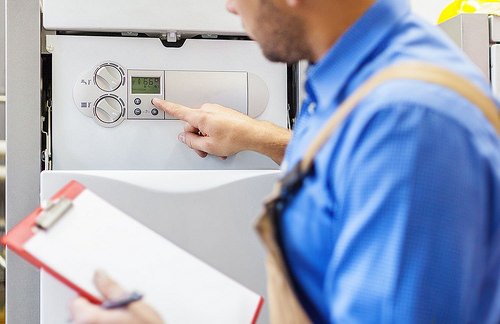Is Your Central Heating System Unbalanced
If some of the rooms in your home feel like they are boiling hot when the heating is on and at the same time some of the rooms feel as though they aren't being heated at all, you have what's known as an "unbalanced" central heating system. Essentially the heat that is being produced by your central heating isn't being distributed evenly.
This is actually a very common problem since rarely do building contractors actually properly set up the heating system before they finish the job, meaning it's often left to you to sort out instead. However, it is a problem that has a solution (you probably just breathed a huge sigh of relief!). You need to have your system "balanced," which, if done correctly, should solve the problem and further alterations shouldn't need doing unless serious changes are made to your home heating system.

However, before you embark on trying to balance your system yourself or hire a L and M Service Specialist to do it for you, it's important to make sure all radiators have been bled, otherwise when you balance the system it might not have the desired effect. It's also important to be aware that there are numerous factors that can affect the temperature of radiators, and a properly balanced systems does not necessarily mean that all radiators will be exactly the same temperature. These factors include:
- The size of the room that the radiator is in
- The level of insulation that the room has
- The size of the radiator itself
- The frequency with which external doors and windows in the room are opened
What's Involved When Balancing Your Home's Radiators?
If you consider yourself a handy DIYer and would like to attempt to solve this issue yourself, we are going to walk you through the steps to doing so. If you're not too "clued up" when it comes to DIY, it would be best to get in touch with someone qualified to deal with issues relating to central heating in Rapid City. Here goes:
- What You Will Need - Before you even start to look at your radiators or your boiler, you will need to ensure you have the necessary equipment to balance your system. This includes a screwdriver, a radiator bleeding key, an adjustable spanner (or a lockshield valve adjuster) and a digital thermometer
- First Steps - The first thing to do is to make sure your central heating is completely switched off and then leave the radiators for an hour or two to completely cool down. Once you've done this you will need to remove the lockshield on each of the valves (usually this is simply a push-on plastic cap). You may need an adjuster to get this off
- What's Next? On the other side of each radiator there will be another type of valve and it could be one of two types depending on the age of your radiators. Older units will typically have what's known as a wheelhead valve, while newer models will typically feature a "thermostatic" valve.
- Adjust the Valves Once you've located these valves and removed the lockshield covers you will need to adjust their position. All valves need to be set to completely open, which is achieved by turning them in an anti-clockwise direction.
- Turn the Heating On It's now time to see the sequence in which your radiators start to heat up. Turn your central heating on and take note of which radiators become warm first; it will usually be those that are located the shortest distance from the boiler unit (that's common sense, right?). If your property contains a large number of radiators, you may need someone to help you on this step. Afterwards you'll need to turn the heating off once again and let the radiators go cold.
- And Again! - Time to turn your heating back on again, and immediately after doing so head to the radiator that warmed up first during the check that you carried out in the last step. It's time to use that digital thermometer. Close the lockshield valve all the way (you do this by turning it clockwise) and then open it by just a quarter of a turn. Leave the radiator a few moments until it becomes warm and then put the thermometer against the pipe that leads to the valve and take a temperature reading.
- More Temperature Readings - Now move to the other side of the radiator and take a reading at the pipe leading to the other valve. This next part is very important; you need to continue to open the lockshield valve little by little until there is roughly a 12 degree difference between these two readings. It's important to note that after moving the lockshield valve you should allow a minute or two for the temperature to change. You then need to repeat this step for every other radiator in your home, and you'll most probably find that in order to achieve this 12 degree difference in the readings at radiators that are further away from the boiler, the lockshield valve will almost need to be completely open.
Balancing the radiators in your home isn't an especially difficult task but if you don't do it properly it can turn out to be a huge waste of time. To be sure of the results that you want, get in touch with our heating engineers in Rapid City and arrange a free in-home consultation.